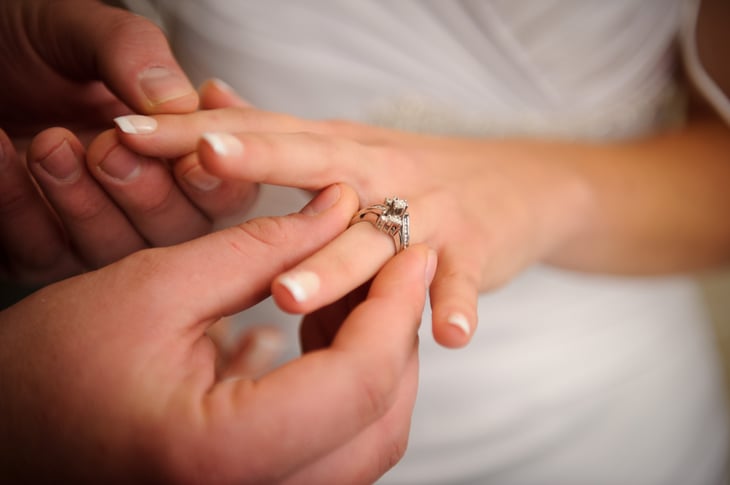
Editor's Note: This story originally appeared on Living on the Cheap.
Even in these modern days, a diamond (or other gemstone) engagement ring is still the symbol of a decision to marry.
But that doesn’t necessarily mean a trip to a traditional jewelry store.
A vintage diamond engagement ring can be a romantic and economical choice. And it may be wise to let your partner have some input when it comes to selecting an engagement ring.
I do understand the romance of your loved one producing a surprise ring. But personally, the idea of someone — no matter how well he knows me — selecting a piece of jewelry I’ll wear every day kind of horrifies me.
My former husband bought my engagement ring on his own, a perfectly handsome pear-shaped diamond on a very simple band. But I shuddered inwardly when he mentioned he’d been looking for a heart-shaped diamond. That would have been so not-me.
If we had looked at rings together, I would have steered him toward an estate or pre-owned engagement ring. Here’s why you might want to consider a vintage ring for your proposal.
Why buy vintage?
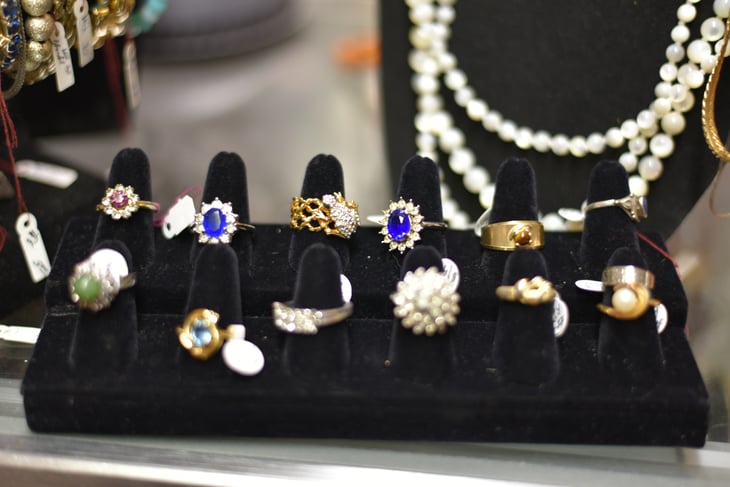
Some people would never buy a secondhand ring — they want their ring to embody the hopes and dreams of their happy future, with no lingering fumes from a failed marriage. Yet Kate Middleton happily accepted a vintage ring from Prince William. You know the ring — the 18-karat oval sapphire surrounded by 14 diamonds that Prince Charles gave to Lady Diana in 1981.
Diana chose it from an array of rings presented by the royal jeweler. Prince Charles paid $65,000.
The ring was new when Charles gave it to Diana. The British public was scandalized that it wasn’t custom-made, and many thought Charles should have chosen a ring from his mother’s collection of crown jewels.
You likely do not have a collection of jewels nor the bank account of the Queen of England. If you’re choosing between a store-bought ring and a secondhand one, know there are some major benefits to buying a vintage diamond ring:
- Older diamonds are about 30% less expensive than a similar new diamond.
- Pre-owned settings cost one-third to one-half the price of the same new setting.
- Vintage or estate rings (more than 50 years old) are more likely to have been made by a jeweler, rather than mass-produced. The workmanship is better and the styles are unique.
- Pre-owned or vintage jewelry is less likely to carry the 300% markup common with new jewelry.
Vintage? Estate? Pre-owned?
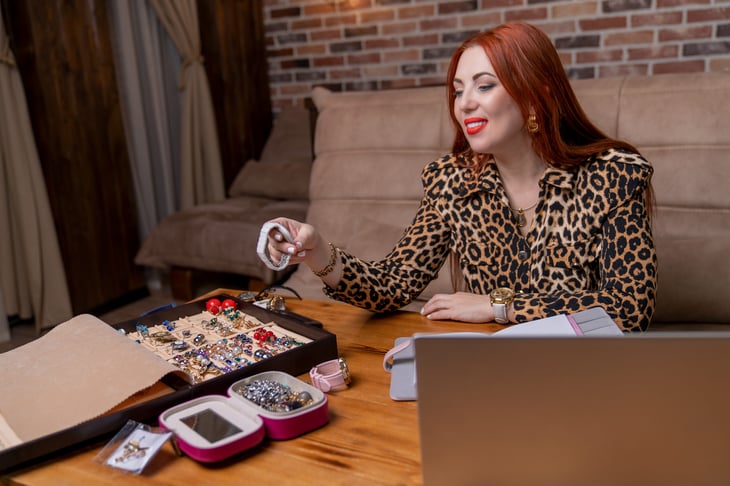
If those arguments are convincing you, there are a few terms you’ll need to know as you shop around for the perfect diamond ring. Definitions of antique, vintage, retro and estate vary by jeweler. Here’s a rough guide:
- New rings consist of stones and settings that have never been owned.
- Retro or vintage rings date between about 1940 and 1980.
- Antique rings are pre-1940. Styles include Art Nouveau and Art Deco (about 1900-1935) and Victorian and Edwardian (1830-1910).
- Pre-owned rings could have come on the market as recently as last year. They may have come from a divorce. But think positively — maybe the couple just decided to upgrade.
More bling for your bucks
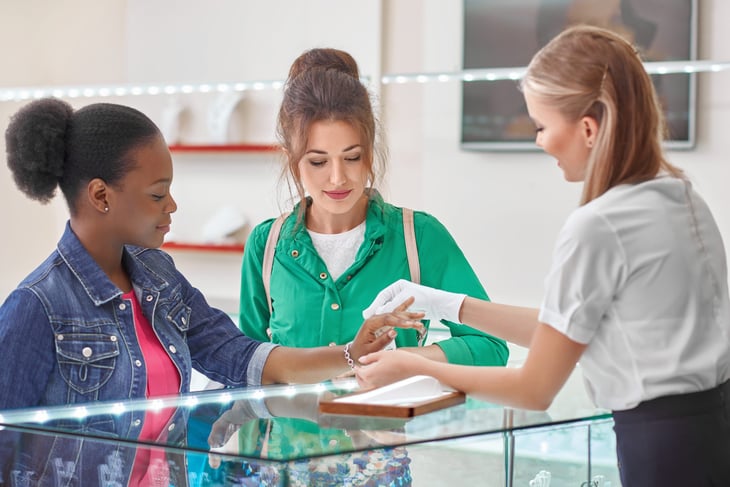
The most obvious advantage to buying vintage is the potential cost savings. There are two components in the cost of the ring — the stone and the setting — and you can save on both by buying resale versus retail.
I checked out a vintage ring at Scotsman Coin and Jewelry, a respected St. Louis business that buys and sells jewelry. It’s not as romantic as going to Tiffany, but the prices are good and they have loads of new, vintage/estate and pre-owned rings.
I chose a ring made in the 1930s or ’40s. Set in 18-karat white gold, the main stone was a 2.2-karat, European-cut solitaire, with several smaller diamonds on each side. The cost was $10,500. Meanwhile, a new ring, similar in design, priced at $10,500, held a brilliant-cut diamond that was only 1.5 karats.
There was a difference in the diamonds — not in their quality, but in their cut. Round solitaires are faceted with a series of Vs cut into the back of the stone. European-cut diamonds have wider Vs that aren’t cut as deeply as the contemporary brilliant-cut solitaire, which has deeper, narrower V facets.
Depending on the diamond, the deeper cuts might give the stone more sparkle.
Savings on settings leave more money for jewels
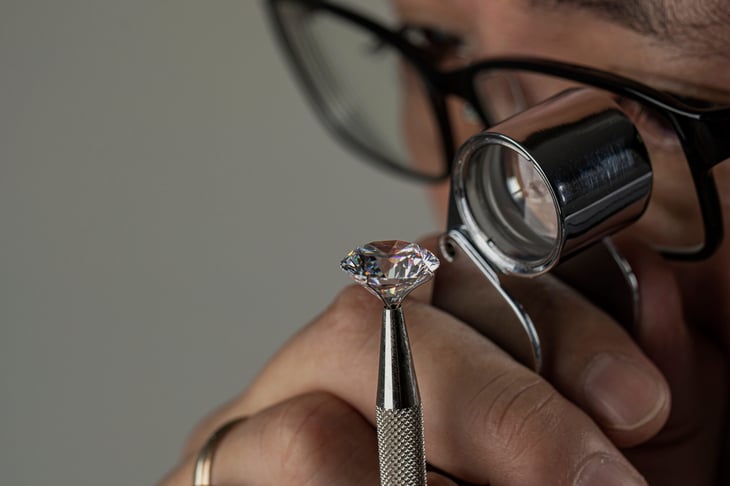
The savings on a contemporary pre-owned ring come from a discount on the setting, rather than the stone. Just a few years ago, if you wanted to spend $3,000 on an engagement ring, the setting would have accounted for about $500; the rest was the cost of the diamond.
Now, the cost is more likely to be evenly split between the setting and the stone. That $500 setting would now cost around $1,200.
I looked at a pre-owned ring with an elaborate setting of tiny diamonds. The wholesale cost of that setting when new was $2,500. This ring (without the diamond) was priced at $1,000. A simple platinum setting priced at $960 would, when new, cost more than $1,500.
The good thing about buying a contemporary pre-owned ring is that the settings and stones are often sold separately. Add a different stone to a setting and the ring is uniquely yours.
True value of vintage is workmanship and style
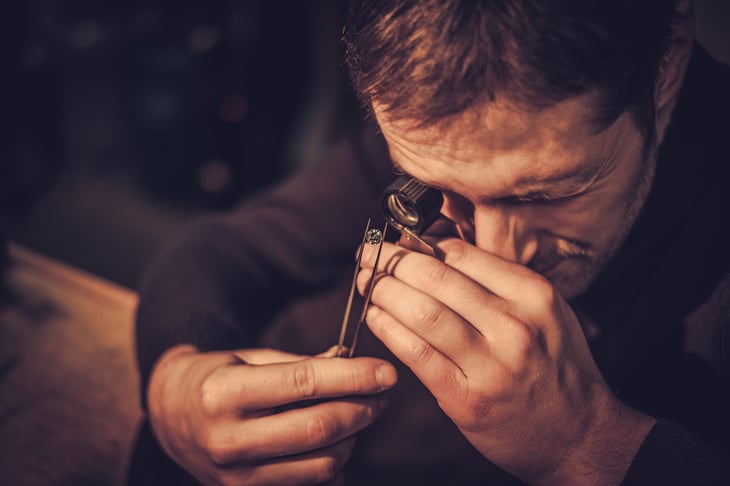
The value, to me, of a vintage ring is in the superior craftsmanship and singular designs of retro rings. The settings are more likely to be handmade, rather than mass-produced. And their elaborate designs — often with scrolls, ribbons, hearts and other embellishments — would require a prince’s fortune if you tried to reproduce them today.
In the past, the design of a ring wasn’t judged on the size of the stone. Somewhere along the line that changed. Some actress somewhere is sporting a 16-karat rock. It’s probably a very high-quality stone in terms of cut, color and clarity.
But how much artistry does it take to plunk a big stone on your finger? You can still get a big stone in a vintage ring, though the largest I came across was about 3 karats. The beauty of many estate rings is the use of smaller diamonds, enhanced by artful settings.
Where to buy a vintage/estate/pre-owned ring

I’m tactile — I like to touch a ring, weigh it in my hand, judge the gleam of its stones with my own eyes. Therefore, I prefer buying at a brick-and-mortar jeweler, or, like the Scotsman store, a reputable resale shop with a certified gemologist on hand.
Another option is buying at auction, either online or in person. Be very careful if you’re going to buy online. One site I like is EraGem because it has a store in the Seattle area. It provides an extensive description of each piece of jewelry, including the weight of the metal and the quality of stones.
Scotsman runs online auctions; again, my confidence comes in its willingness to provide certification of a gemstone’s quality based on standards established by the Gemological Institute of America (GIA).
Needless to say, buying resale rather than retail when shopping for an engagement ring requires a little more effort. Because you may be comparing stones from different sources, make sure you write down the quality ratings of each one (again, see the GIA), so that you are comparing rings of similar quality, size and cut.
If you take your time, you can find what you want at a discounted price.





Add a Comment
Our Policy: We welcome relevant and respectful comments in order to foster healthy and informative discussions. All other comments may be removed. Comments with links are automatically held for moderation.